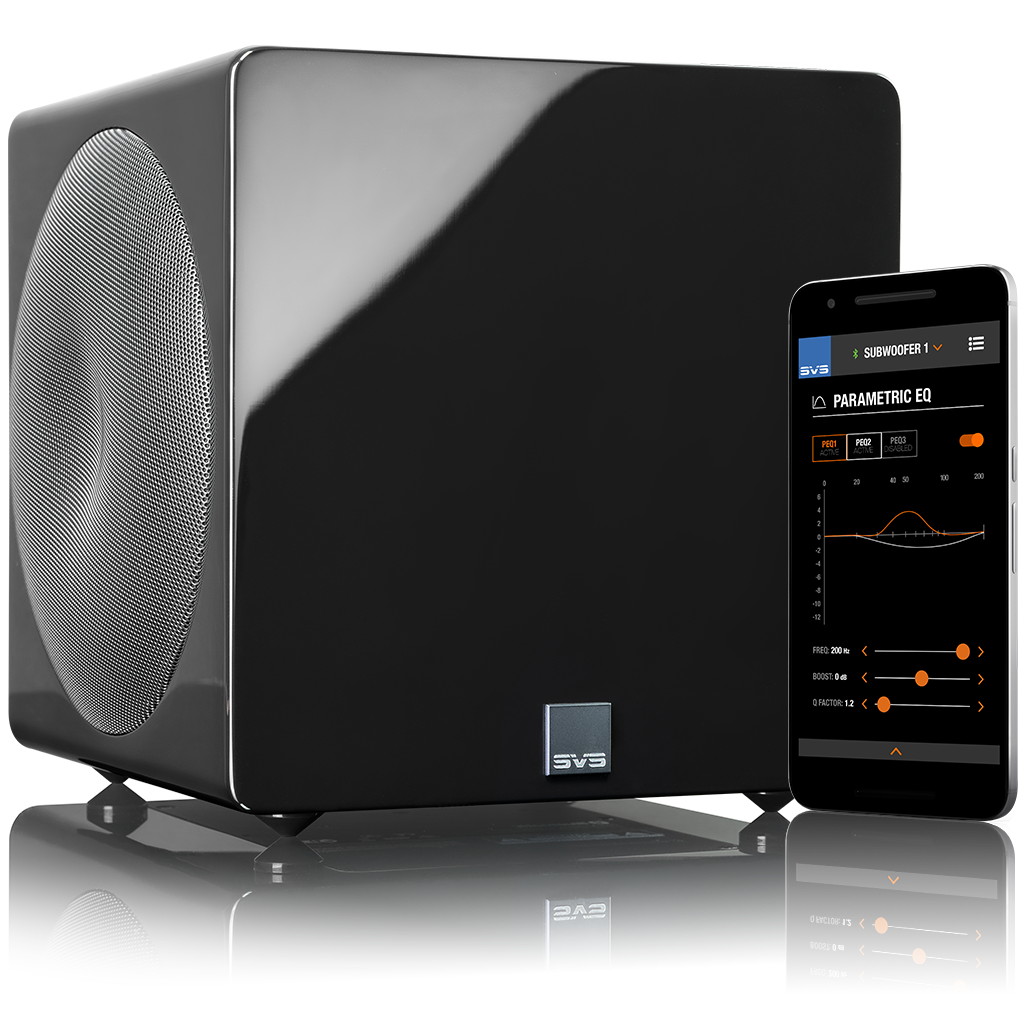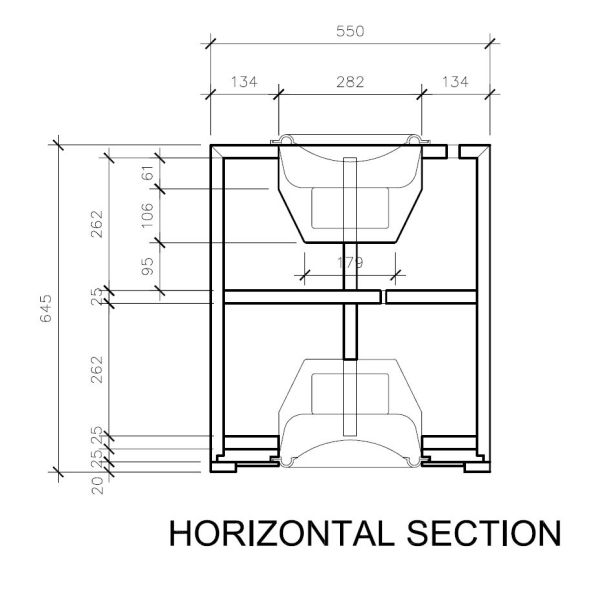Not sure we're talking about the same thing.For dual opposed? Disagree. Rythmik and PSA are way, way better.
-
WANTED: Happy members who like to discuss audio and other topics related to our interest. Desire to learn and share knowledge of science required. There are many reviews of audio hardware and expert members to help answer your questions. Click here to have your audio equipment measured for free!
You are using an out of date browser. It may not display this or other websites correctly.
You should upgrade or use an alternative browser.
You should upgrade or use an alternative browser.
Dual Opposed Subwoofer Theory?
- Thread starter sloth_kwj
- Start date
- Joined
- Jun 5, 2020
- Messages
- 4,804
- Likes
- 3,747
What were you trying to show with the KEF example?Not sure we're talking about the same thing.
Dual opposed (back to back)What were you trying to show with the KEF example?

3000 Micro
Mini subwoofer delivers deep, chest-thumping home audio bass from a small sub cabinet.
- Joined
- Jun 5, 2020
- Messages
- 4,804
- Likes
- 3,747
Okay, that's what I thought. I posted two companies that make better dual opposed subs.Dual opposed (back to back)

3000 Micro
Mini subwoofer delivers deep, chest-thumping home audio bass from a small sub cabinet.www.svsound.com
Okay, that's what I thought. I posted two companies that make better dual opposed subs.
next time i read what was written before
Last edited:
Wouldn't that make it a single sub with two drivers, without the benefits of a multi-sub system?the 2 drivers can easily be spaced within 1/4 wavelength of each other due to the large wavelengths in their passband
Wouldn't that make it a single sub with two drivers, without the benefits of a multi-sub system?
Yes, but the benefits of a multi-sub system occur when spacing is further apart than in any meaningful dual-opposed configuration. Multi subs spread out how the room is energised, dual opposed claim to cancel out enclosure vibrations.
It's not just a claim, it actually does.Yes, but the benefits of a multi-sub system occur when spacing is further apart than in any meaningful dual-opposed configuration. Multi subs spread out how the room is energised, dual opposed claim to cancel out enclosure vibrations.
I see! Thank you, I missed he point then, and never heard about this concept before.Yes, but the benefits of a multi-sub system occur when spacing is further apart than in any meaningful dual-opposed configuration. Multi subs spread out how the room is energised, dual opposed claim to cancel out enclosure vibrations.
Keith_W
Major Contributor
Yes, but the benefits of a multi-sub system occur when spacing is further apart than in any meaningful dual-opposed configuration. Multi subs spread out how the room is energised, dual opposed claim to cancel out enclosure vibrations.
That's what I had custom built for myself. These are the CAD drawings (all measurements in mm):


And this is the result. It was my desire to have the subwoofer box match the design of the TV cabinet as much as possible, but in the end it was not possible to get a veneer match. So I had to settle for something close in colour but without the grain:

I have two subwoofer boxes, each box has two drivers. It is quite overwhelming and the bass response, as measured with REW, is not as lumpy compared to if I only had one. Sorry I don't have a graph with me to post.
Keith_W
Major Contributor
Thank you @maverickronin. There were quite a few reasons why I thought it was advantageous to go with this design. First is the vibration cancellation. Second is double output at where in-room measurements showed that placing the subs there would result in the smoothest in-room response. Third is that each driver has half the excursion needed to produce the same volume, which bring the 4th and 5th benefits: more time spent in the linear magnetic portion of the motor, and less cone breakup. Then there are the benefits of a high Q design, and the Rythmik drivers I used are servo controlled. The whole thing is integrated into the main speakers with DSP. The result is remarkably linear bass and to be frank, a little too much output unless I turn the volume all the way down.
It's not just a claim, it actually does.
Well, yes but not so much if both are spread apart wide enough as to mimic a multisub configuration.
I had one question that came to my mind.
Usually Dual-Opposed Subwoofers (DOS) are designed like this:
(view from the side)

Theoretically speaking, would this design also work fine?

I am asking as I am aiming for a slim design and the latter driver arrangement would allow that
I think it would work just fine but any comments would be welcome
Thank you
Usually Dual-Opposed Subwoofers (DOS) are designed like this:
(view from the side)
Theoretically speaking, would this design also work fine?
I am asking as I am aiming for a slim design and the latter driver arrangement would allow that
I think it would work just fine but any comments would be welcome
Thank you
- Joined
- Jun 5, 2020
- Messages
- 4,804
- Likes
- 3,747
Mostly, but there would be some measurable imbalance between the top and bottom.
What do you mean by imbalance please?Mostly, but there would be some measurable imbalance between the top and bottom.
I had one question that came to my mind.
Usually Dual-Opposed Subwoofers (DOS) are designed like this:
(view from the side)
View attachment 247496
Theoretically speaking, would this design also work fine?
View attachment 247497
I am asking as I am aiming for a slim design and the latter driver arrangement would allow that
I think it would work just fine but any comments would be welcome
Thank you
The second one wouldn't really be dual opposed any longer since the axis between the woofers is no longer symmetrical. When the drivers are moving, the imbalance of the forces will make the cabinet vibrate. Acoustically, that's not usually much of a problem, (and it can easily be considered a plus as that vibration will couple to your floor and chair) but you loose the ability to use it as an end table you can set your drink on.
If you're trying to fit as many drivers as possible in a tall and slim volume then it should be fine, depending on your crossover frequency.
It really depends on your needs and goals.
Well, yes but not so much if both are spread apart wide enough as to mimic a multisub configuration.
That sounds like a weird design and an extremely large (or long?) subwoofer
- Joined
- Jun 5, 2020
- Messages
- 4,804
- Likes
- 3,747
For every action there is an equal and opposite reaction. With a driver perfectly opposed, there is perfect canceling. I'm not saying it will wobble like a washing machine, but being off-axis from the other driver there will be a less than perfect effect. Use HDF and ensure that thing is heavy and stable.What do you mean by imbalance please?
For every action there is an equal and opposite reaction. With a driver perfectly opposed, there is perfect canceling. I'm not saying it will wobble like a washing machine, but being off-axis from the other driver there will be a less than perfect effect. Use HDF and ensure that thing is heavy and stable.
Thanks @maverickronin and @Chromatischism, much appreciated!he second one wouldn't really be dual opposed any longer since the axis between the woofers is no longer symmetrical. When the drivers are moving, the imbalance of the forces will make the cabinet vibrate. Acoustically, that's not usually much of a problem, (and it can easily be considered a plus as that vibration will couple to your floor and chair) but you loose the ability to use it as an end table you can set your drink on.
If you're trying to fit as many drivers as possible in a tall and slim volume then it should be fine, depending on your crossover frequency.
It really depends on your needs and goals.
I will think about it twice, maybe I will just stick to using 1 driver but with a bigger size - will simulate different scenarios and decide accordingly
Similar threads
- Replies
- 18
- Views
- 2K
- Replies
- 29
- Views
- 3K
- Replies
- 25
- Views
- 2K
- Replies
- 4
- Views
- 565
